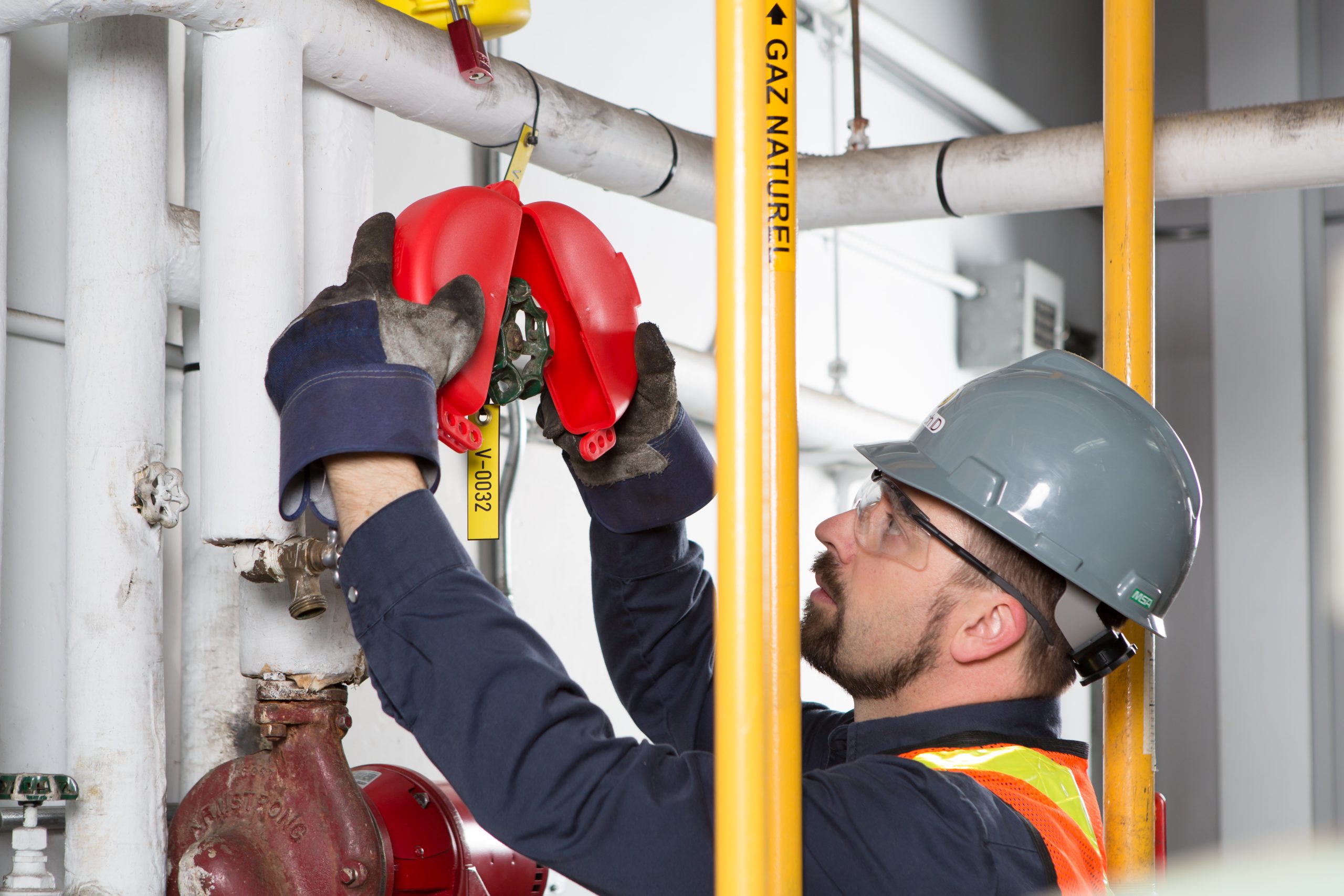

Votre programme de cadenassage fait-il le travail ?
You have a lockout/tagout (LOTO) program—but is it complete?
Each part of a LOTO program is essential to ensure the safety of your team and compliance with regulations.
Why? Because all the components are interconnected. If one pillar of the program fails, it jeopardizes employee safety—and puts you at risk of legal non-compliance. Are you willing to take that risk?
Let’s take a look at the role of each component in a lockout/tagout program.
Coding: Bringing Order Before You Begin
A lockout program aims to control energy sources. It must specify how to reliably shut down each piece of equipment. To ensure the correct procedure and the right locks are used, each piece of equipment must be identified with a unique code to avoid confusion. Applying a lock to the wrong isolation point is dangerous.
The coding or “standardization” step establishes the rules for naming each piece of equipment and its isolation points. These rules must be easy to understand and apply. Coding should be simple and intuitive.
For example, you might use the abbreviation “PMP” whenever identifying a pump. The goal is to ensure each type of equipment is labeled consistently.
The identification code should be short and easily understood. Avoid characters that could cause confusion, such as the number zero and the letter “O”.
Identification: Applying the Coding
Once coding rules are established, the next step is to physically label each piece of equipment with its correct code. Each isolation point—where locks will be placed—must also be labeled.
The placement of these identification tags is critical: they must be clearly visible and easy to read, reducing the risk of errors—like locking out the wrong valve.
Creating the Lockout Sheet: Don’t Miss Anything
The lockout sheet outlines the step-by-step procedure to lock out a piece of equipment or an isolated section of a system or production line. This is the document workers will use in the field.
To create it, the equipment must first be analyzed onsite to ensure all energy sources are identified. When Fabtech ID conducts this analysis, they ask plant employees to review the findings—because they know the equipment better than anyone.
The goal: don’t miss anything.
The final version of the lockout sheet must comply with all applicable regulations, but it can also include additional information that your team finds useful.
After the sheet is created, it must be reviewed by company personnel: Is it complete? Does it accurately reflect what’s on the ground?
A common mistake: assigning this review to inexperienced staff. This step is critical, yet often rushed or overlooked.
A lockout sheet can be dozens of pages long. Verification takes time, but it must be done thoroughly. The right trade professionals should review the relevant sections—if an isolation point involves cutting power, an electrician must check the electrical parts of the sheet.
Accessories: Meeting Specific Needs
Once all isolation points are identified, it’s time to think about the required accessories: locks, boxes, isolation aids, etc.
Typically, before heading to a lockout site, the worker will have the lockout sheet. This sheet lists the mechanisms needed (valve cover, hasp, padlocks, etc.). The worker uses a mobile box to gather the required tools from the designated lockout station.
That’s why verifying your lockout stations is crucial. The right tools must always be available.
When implementing a LOTO program, be sure to purchase the correct accessories. At Fabtech ID, we offer a wide range of brands and now even have a 3D printer to create custom components.
Did You Know?
It is a criminal offense to tamper with or force open a locked-out mechanism in order to access the energy source without first removing the lock. Think about that.
Training: Ensuring Program Success
Without training, employees may struggle to properly apply your LOTO program. Everyone needs to understand the rules. Training must include both theory and hands-on practice to confirm understanding.
When we train client teams, we include both written and practical exams for employees—tailored to the company’s specific rules.
Audits: Staying on Course
Over time, due to staff turnover or complacency, a LOTO program can lose effectiveness. If too many new employees aren’t trained or the production setup changes, the company may face risks.
That’s why it’s crucial to regularly check that the program is being properly followed. To track its evolution, audits should be conducted regularly. External audits are recommended periodically, while internal audits should be more frequent. Various parts of the program can be audited.
At Fabtech, we typically audit every two years—allowing us to track improvements or detect weak spots.
The goal: keep your LOTO program effective over time.
The Value of an External Perspective
So—is your lockout/tagout program complete?
It may be tempting to create and manage your program using only internal resources. But our experience shows this is much slower. Involving external expertise pays off: developing, implementing, and maintaining your LOTO program becomes faster, simpler, and more effective.
It’s also the safest way to ensure full regulatory compliance.
Fabtech ID has over 35 years of expertise in controlling hazardous energy. Our specialists are ready to help you with all your lockout activities. Reach out for guidance today!







